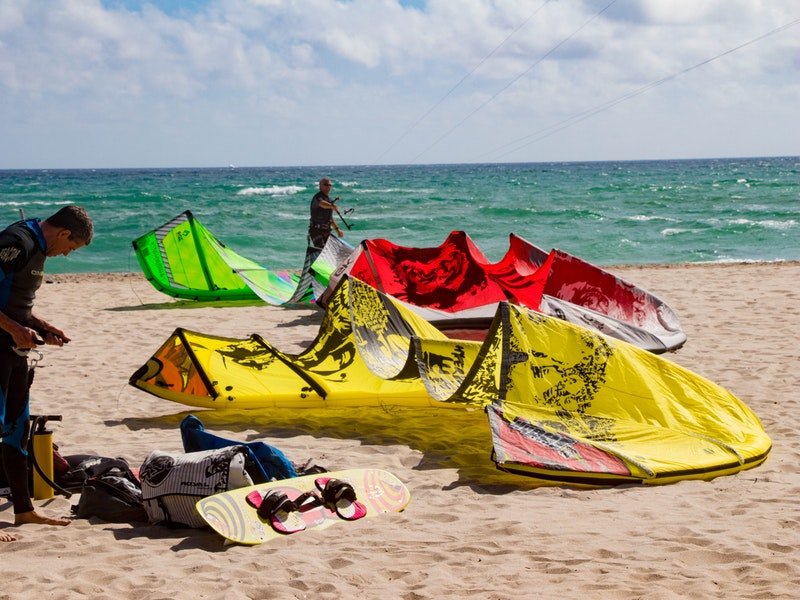If you’ve started enjoying skydiving or would like to try skydiving but don’t feel ready, you might be wondering what other similar sports to skydiving there are.
Many sports use elements of skydiving or give a similar feeling or emotion. Some sports like base jumping and wingsuiting add more dangerous aspects to skydiving and are popular with high adrenalin thrill-seekers. But there are also sports such as bungee jumping and Parasailing, which offer some of the thrill and adventure but are much more accessible and safer to try.
Let’s look at some of the similar sports to skydiving.
How does base jumping compare to skydiving?

Base jumping is a much more extreme twist on skydiving. Rather than skydiving from a plane at altitudes over 10,000 feet, base jumping is the sport of jumping from objects, typically at much lower heights.
The word ‘base’ in the name is an acronym. It stands for buildings, antennae, spans (as in bridges), and earth (as in cliffs). It uses a lot of the techniques of freefall and parachuting but relies on modified equipment. Due to the low altitudes and closeness to objects during freefall, base jumping is considerably more dangerous than skydiving. While skydiving has a fatality rate of one in 100,000, for base jumping, it’s closer to 43 in 100,000. Most base jumpers first become experienced skydivers before having access to the sport. Many base jumping courses first require you to have a skydiving B license and at least 200 completed solo skydives.
There is also another version of skydiving, where skydivers jump from hot air balloons. It’s called Hot Air BalloonSkydiving, done from similar heights as plane skydiving. This version of the sport is a new twist on skydiving, which has recently become popular in Dubai.
Is wingsuiting similar to skydiving?
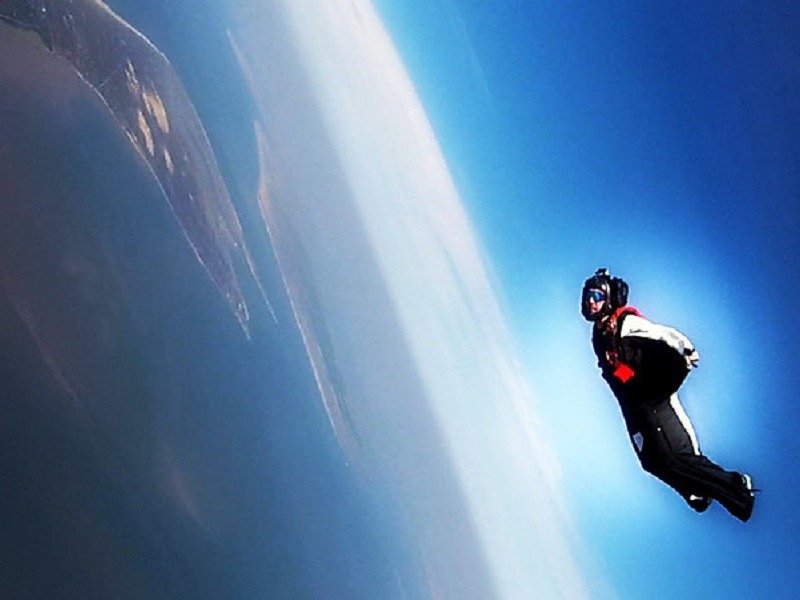
Wingsuit flying is another twist on skydiving. It’s often done following ‘base’ rules, but instead of jumping into freefall and then parachuting, wingsuit flyers fly for a period before parachuting. The special jumpsuit, called a wingsuit (or sometimes a bird suit), gives the jumper a unique aerodynamic that allows them to fly (like a flying squirrel). The jumpsuit has material between the arms and body, creating wings and material between the legs. The suit is made from nylon cells, which inflate as you jump.
Wingsuiting is also very dangerous, arguably more so than base jumping. While a base jumper should first become a strong skydiver, a wingsuiter should first become a skilled base jumper. It’s also a young sport with modern wingsuiting only starting in the 1990s.
Wingsuiters can control the direction and speed of their flight and even achieve some lift. It’s performed from both planes or objects. To land successfully, the wingsuiter must reduce their wingsuit before opening their parachute. Wingsuiters can travel as fast as 180 MPH, with the fasted recorded wingsuit flight being over 246 MPH. American wingsuiter Fraser Corsan performed this record speed in 2017.
Is hang gliding like skydiving?
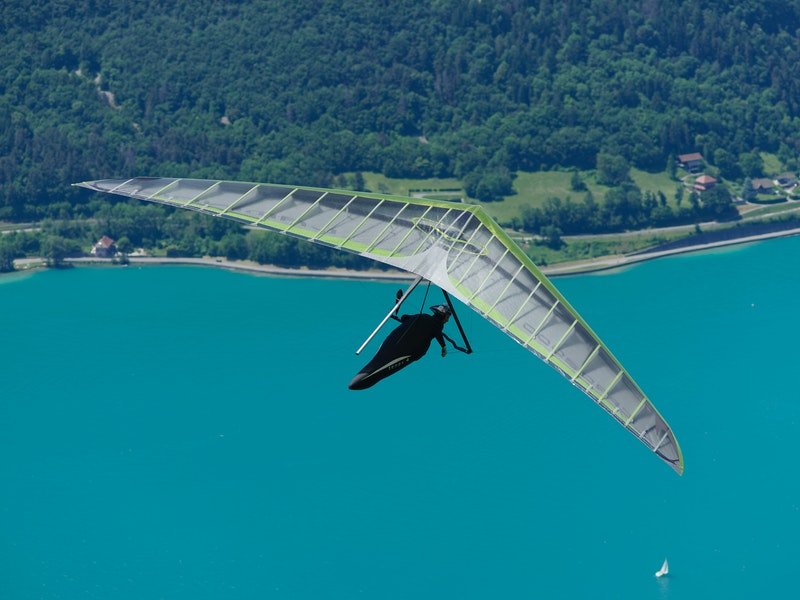
Hang gliding is another air sport and one which is safe compared to base jumping and wingsuiting. Pilots fly a unique, non-motorized aircraft called a hang glider. They are incredibly light, made out of an aluminum alloy frame and a synthetic sailcloth wing. The pilot hangs within the triangular frame via harnesses and can control the glider by shifting their body weight within the frame.
Hang gliding originally started as a sport where people would glide down close to hills, and flights were short. Modern hang gliders can now climb to dizzying altitudes and stay airborne for hours. They can also reach speeds of 100 MPH. Using rising thermals (pockets of natural warm air), a hang glider can gain lift, traveling long distances, and navigate complex courses.
There is no freefall element to hang gliding, but it does offer high-altitude flights and incredible views. Unlike the previously mentioned sports, hang gliding can be a much more controlled adventure and more extended experience. It does require a lot of training, especially with regards to reading the conditions. No knowledge of skydiving is needed.
Is bungee jumping similar to skydiving?
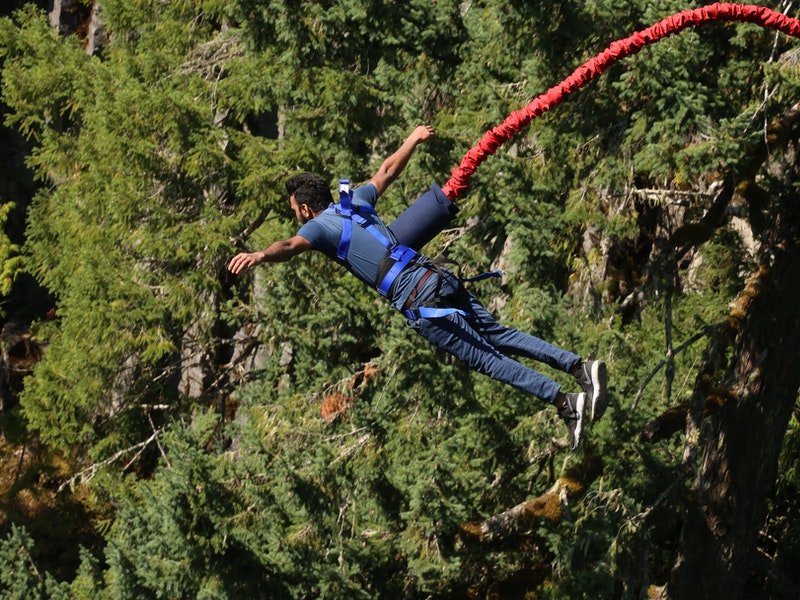
Perhaps bungee jumping is one of the more accessible sports similar to skydiving. Bungee jumping is the sport of leaping from a tall structure, with a thick rubber rope secured to your ankles and the structure. Jumpers freefall very close to the ground before springing back up and slowing down before being lowered to the ground.
Bungee jumping is still a reasonably new sport, first starting commercially in New Zealand in the late 1980s. It has rapidly grown in popularity in the last two decades, and it is now common to find a bungee jump experiences near many popular tourist spots. A bungee jump in the USA can cost anything from $30 to $300, with all equipment supplied. There is also next to no training needed other than a short safety briefing.
It’s one of the cheapest, fastest, and safest ways to experience freefall. It’s not quite in the same league of the adrenaline rush skydiving can offer, but it is a good taste. Unlike skydiving, a bungee jumper will also get the feeling of being catapulted back up by the cord. It has a fatality rate of 1 in 500,000, which makes it five times safer than skydiving.
Is Paragliding like skydiving?

Paragliding is a sport that uses paragliders to allow pilots to fly. It’s a cross between parachuting and hang gliding. There are no solid structures; the paraglider is like a skydiving parachute but is rigid when its wing captures the air. However, unlike all the sports mentioned so far, there is no jumping down involved in Paragliding.
To get started, the pilot sets up his paraglider and begins to launch it, a bit like launching a kite. The paraglider is wider than most skydiving parachutes, and when inflated, it’s more of a curved fabric wing. Once the wing is in the air and has inflated correctly, the pilot then runs off the edge and begins to take flight.
Paragliders can stay in the air for hours and perform complex flights. Like hang gliding, pilots use pockets of warm air, called thermals, which can lift the paraglider higher. Pilots plot their routes from thermal to thermal.
The sport of Paragliding offers another version of human flight without the use of an engine. It does require knowledge, skill, and training, but no knowledge of skydiving is necessary.
How does Parasailing compare to skydiving?
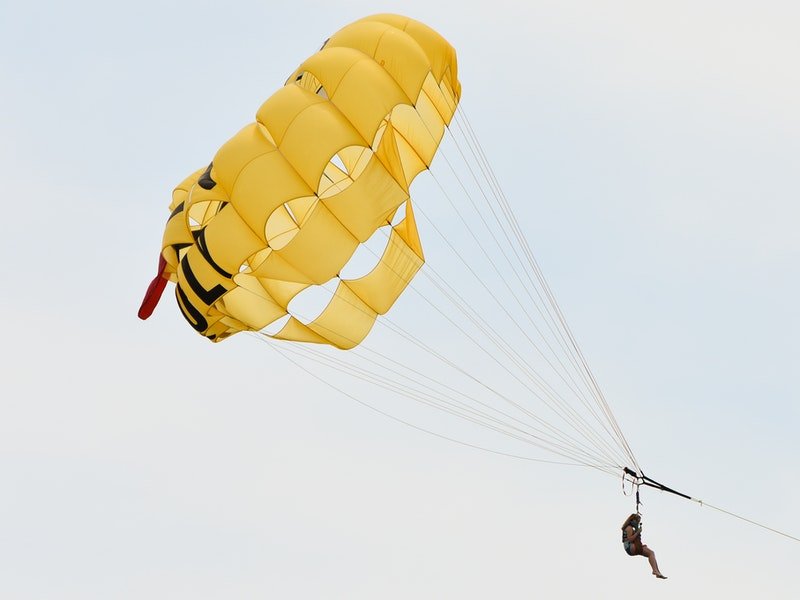
Parasailing is perhaps the safest way to experience parachute flight. Sometimes known as parakiting, it is a sport where people are strapped into a special harness attaches to a parachute (known as a wing) and then towed behind a vehicle. As the vehicle moves, the wing catches the air and lifts. Parasailing heights depend on the tow line’s length, but they can reach altitudes close to 1,000 feet.
The canopy is specially designed to offer a smooth flight, gently raising you up and lowering you down, controlled by the speed of the towing vehicle. It’s commonly done over water, being towed by a speed boat, which also offers extra safety to an already reasonably safe sport.
The sport was created in the 1980s and quickly took off as a popular holiday leisure activity. There is also a form of competitive Parasailing which takes place over land. Each competitor is flown to a predetermined height and then released from the towing vehicle. The aim is to fly as far and accurately as possible.

